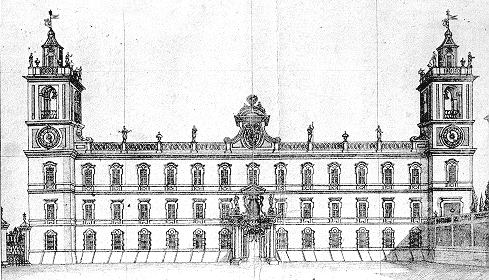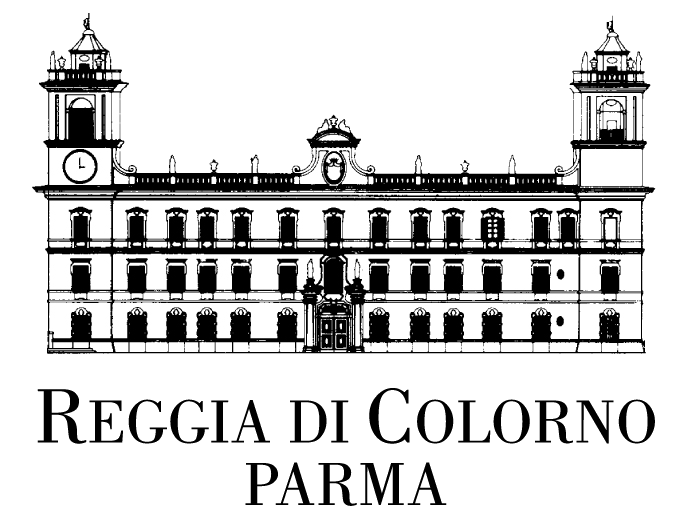
On the site now occupied by the Palace there was once a fortress built by Azzo da Correggio in 1337, later transformed into an aristocratic residence by Barbara Sanseverino.
The castle together with the Sanseverino’s properties were confiscated by the Farnese family in 1612.
Some important restoration works were begun after Ranuccio II Farnese’s marriage with Princess Margherita Violante of Savoy, transforming the castle to its present day aspect.
The plan was finished by their son Francesco Farnese, with the help of the architect Ferdinando Galli Bibiena.
After the death of Antonio Farnese who had no heirs, the duchy of Parma and Piacenza was inherited by Carlo III of Bourbon through maternal lineage.
In 1734, after he became King of Naples, the most valuable furniture and the Farnese’s art collections were taken to Naples. In 1749 the heir of the duchy Filippo of Bourbon, Carlo III’s brother, and Louise Elisabeth, the daughter of King Luigi XV, called French workers who transformed the interior of the Palace and made it similar to that the duchess had left in Versailles.
After the death of Ferdinando, Filippo of Bourbon’s son, succeeded his father in 1765, the duchy was annexed to France by Napoleon. In 1807 the Palace was declared “Imperial” and new restoration works were carried out, which continued when the duchy, after the Congress of Vienna, was given to Napoleon’s wife Maria Luigia of Austria.
After the Unification of Italy, the Palace was purchased by the Province of Parma
The Piano Nobile and the Great Room
Although some of the rooms were used for formal ceremonies and for entertaining, they are all intimate, following the French style of the period. The French standards are also present in the refined elements of the décor fixe: marble fireplaces coordinated with the polychrome inlaid floors, tall double doors with engraved gilt bronze locks and ceilings with stucco decorations with vegetable elements and rocaille motifs. The Great Room is the most important room of the Palace. It was built between 1755 and 1756 following the design of the architect Ennemond-Alexandre Petitot, and represents one of the first example of neoclassical decoration in Europe. On the walls there are four paintings by two French artists, Francois La Croix and Adrien Manglard, purchased in Rome in 1759 by the duke Filippo of Bourbon. In this room it is possible to admire the fireplace made of white marble from Carrara by the sculptor Jean Baptiste Boudard and the gilded wooden consolle made in 1769 by the carver Ignazio Marchetti based on a sketch by Petitot.
Saint Liborio Ducal Chapel
Built under Francesco Farnese in 1722, it was rebuilt and enlarged in 1777 by Ferdinando of Bourbon. The interior represents a fine example of the perfect integration of architectonic structure, ornamentation and furniture, thanks to work completed in just a few years time and to the absence of alterations since the date of its creation.
There are works by Domenico Muzzi, Gaetano Callani, Giuseppe Baldrighi, Antonio Bresciani and Laurent Pécheux. Of noteworthy importance are the liturgical furniture and the wooden choir, wonderful Parmesan work of the 18th century.
The church owns one of the most interesting and valuable ancient organs in existence.
It is an exceptional instrument as far as dimensions, tone and structural features are concerned; it was built by the brothers Serassi from Bergamo between 1792 and 1796.
Ferdinando of Bourbon’s New Apartment
It was built by Ferdinando of Bourbon between 1787 and 1789 in a formerly existent wing of the Palace facing the Parma river. Some recently restored rooms show frescoes, by Antonio Bresciani, painted as tapestries, representing biblical scenes. The most striking room of the Apartment is the Astronomic Observatory: in the vault there is the wind rose surrounded by the signs of the zodiac. A great illusionistic effect is produced by the perspective of a balcony painted at the bottom of the walls, where it joins the vault.
